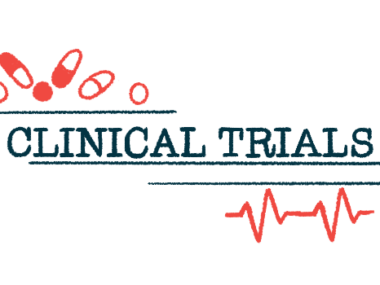Key protein flattens with one-time chronic hepatitis B treatment
HBsAg protein is a marker of viral load
Written by |

Chroma Medicine’s investigational one-time treatment CRMA-1001 for chronic hepatitis B brought levels of a key hepatitis B virus (HBV) protein to nearly 0 in a mouse model of the disease.
The protein, called hepatitis B surface antigen (HBsAg), is a marker of viral load, and its reduction with a single dose of the therapy was maintained for at least two months.
Experiments with an earlier, less-potent CRMA-1001 version showed a deep HBsAg reduction that lasted for more than six months, along with an increase in hepatitis B surface antibodies, or anti-HBs, the presence of which is a sign the immune system is recognizing and protecting the body against HBV.
The findings were shared by Yesseinia Angleró-Rodríguez, PhD, Chroma’s associate director of preclinical programs, in the oral presentation “Preclinical development of CRMA-1001, an epigenetic editor for the treatment of chronic hepatitis B” at the 2024 International HBV Meeting last week in Chicago.
“These promising data showcase our ability to achieve potent, specific, and durable suppression of HBV biomarkers with our epigenetic editing approach and support continued advancement of CRMA-1001 to the clinic,” Catherine Stehman-Breen, MD, Chroma’s CEO, said in a company press release.
Hepatitis B is a viral infection that causes the liver to become inflamed. People infected with HBV may not manifest overt symptoms until the disease has already progressed to where permanent scarring interferes with liver functioning, which sometimes leads to liver failure.
Current treatments for hepatitis B can keep the virus under control by stopping it from multiplying, but usually require lifelong use. Few patients are able to stop taking medication without the virus coming back. Chroma’s efforts seek to provide a more lasting solution that may “drive functional cure,” Angleró-Rodríguez wrote in the presentation.
What is CRMA-1001?
CRMA-1001 is a one-time therapy that takes advantage of epigenetics, a cellular system that adds chemical marks to DNA that influence gene activity without altering the underlying DNA sequence.
The epigenetic editor is designed to specifically silence the two forms of HBV’s DNA — covalently closed circular DNA and integrated DNA — preventing the production of more viral proteins. These forms of viral DNA can remain within hepatocytes, the main working cells in the liver, even when the virus appears to be under control.
CRMA-1001 adds chemical markers called methyl groups to HBV’s DNA to make it wrap tightly, turning genes off. Because CRMA-1001 doesn’t cut through DNA, it’s less likely to cause unwanted changes to a patient’s DNA, making it safer.
“Our platform represents a differentiated approach that addresses the key biological challenges underpinning treatment of chronic hepatitis B, offering the potential to meaningfully improve rates of functional cure for patients,” Stehman-Breen said.
Testing HBV treatment in mouse models
The newly presented data came from experiments in two mouse models of hepatitis B.
In both models, a single dose of a CRMA-1001 prototype, called HBV-EE, dramatically reduced blood levels of HBsAg, which is critical for HBV’s ability to infect cells and escape the immune system. This reduction lasted more than six months, with a dose-dependent response in one model.
In the mouse model carrying genes that provide instructions to produce HBV proteins, the drop in HBsAg occurred along with an increase in anti-HBs levels at all doses tested.
At nearly seven months after treatment with HBV-EE, the virus’ DNA in liver tissue presented “robust, durable methylation,” or methyl groups, Angleró-Rodríguez wrote.
HBV-EE also specifically targeted HBV’s DNA with no other changes in gene activity or DNA methylation in lab-grown human hepatocytes. This means it’s possible it doesn’t cause unwanted changes to patient DNA, reducing the risk of side effects.
The latest version of the treatment, CRMA-1001, appears to be much more potent than an earlier version, achieving a deeper reduction in circulating HBsAg than its prototype when given at the same dose. Specifically, the new version resulted in a more than 99% drop in HBsAg levels, which lasted at least 56 days, or about 1.8 months, “reinforcing the potential for epigenetic editing to deliver effective, single-course treatment to drive meaningful functional cure rates in patients with chronic hepatitis B,” acording to the press release.







